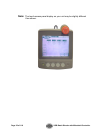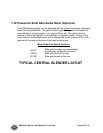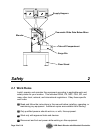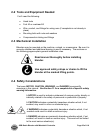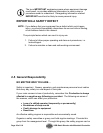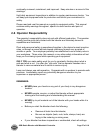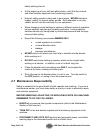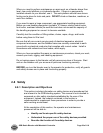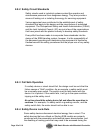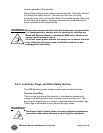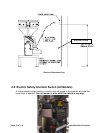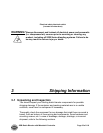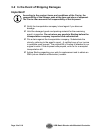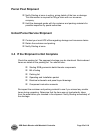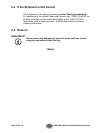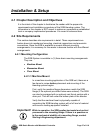
Page 30 of 118 SGB Batch Blender with Mitsubishi Controller
2-8-2 Safety Circuit Standards
Safety circuits used in industrial systems protect the operator and
maintenance personnel from dangerous energy. They also provide a
means of locking out or isolating the energy for servicing equipment.
Various agencies have contributed to the establishment of safety
standards that apply to the design and the manufacture of automated
equipment. The Occupational Safety and Health Administration (OSHA)
and the Joint Industrial Council (JIC) are just a few of the organizations
that have joined with the plastics industry to develop safety standards.
Every effort has been made to incorporate these standards into the
design of the SGB blending system; however, it is the responsibility of
the personnel operating and maintaining the equipment to familiarize
themselves with the safety procedures and the proper use of any safety
devices.
2-8-3 Fail Safe Operation
If a safety device or circuit should fail, the design must be such that the
failure causes a “Safe” condition. As an example, a safety switch must
be a normally open switch. The switch must be held closed with the
device it is to protect. If the switch fails, it will go to the open condition,
tripping out the safety circuit.
At no time should the safety device fail and allow the operation to
continue. For example, if a safety switch is guarding a motor, and the
safety switch fails, the motor should not be able to run.
2-8-4 Safety Device Lock-Outs
Some safety devices disconnect electrical energy from a circuit. The
safety devices that are utilized on Sterling SGB models are primarily
concerned with the pneumatics and electrical power disconnection, and
the disabling of moving parts that may need to be accessed during the



